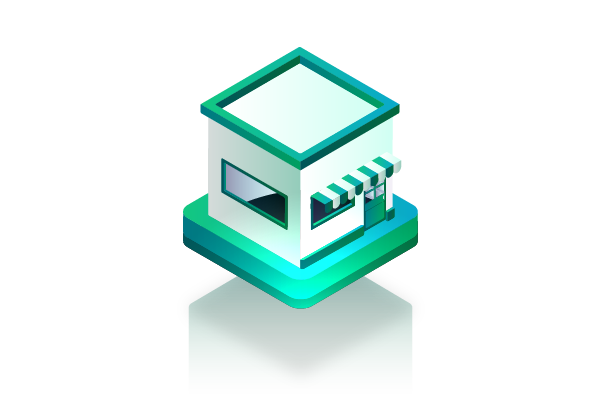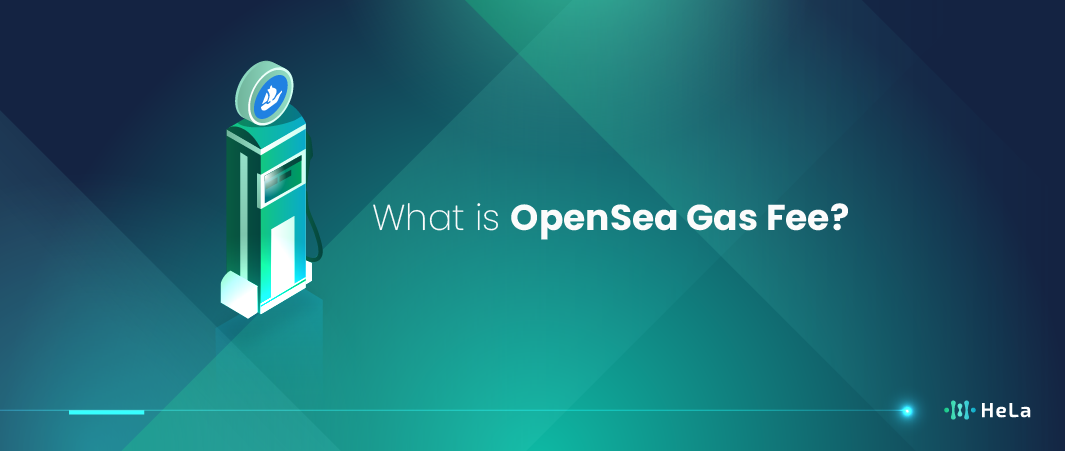When participating in the bustling digital marketplace of OpenSea, understanding gas fees is crucial. These fees are inherent to the transactions on the Ethereum blockchain, which OpenSea primarily uses. For newcomers and seasoned traders alike, gas fees can seem like a complex hurdle, but they’re an essential part of ensuring your transactions are processed on the blockchain. This article simplifies the concept of OpenSea gas fees, showing you how they work, how to calculate them, and how they compare to fees on other platforms.
Gas fees on OpenSea fluctuate based on network activity. This can lead to varying charges when you buy, sell, or mint NFTs. Given that these fees go to network miners who validate and add transactions to the blockchain, they are not fees from which OpenSea profits. This is a key point of confusion for many users. By understanding these fees, you can make more informed decisions about when and how to transact on OpenSea.
This explanation will take you through the basics of gas fees, the factors influencing their cost, and how to potentially minimize what you pay. We’ll compare OpenSea’s fees to other platforms, helping you understand the broader landscape of NFT marketplaces. With a practical approach, this article aims to equip you with knowledge to navigate the complexities of blockchain fees with confidence.
What is the Gas Fee in OpenSea?
In the context of OpenSea, which is a platform for buying and selling non-fungible tokens (NFTs), “gas fees” refer to the transaction costs that users must pay to conduct operations on the Ethereum blockchain, which OpenSea primarily uses. These fees are not specific to OpenSea but are inherent to Ethereum and similar blockchains.
Gas fees are required for various actions such as transferring NFTs, minting new NFTs, or modifying ownership data. The amount of the fee depends on the complexity of the transaction and the current demand on the network. When the Ethereum network is busy, gas fees can increase significantly. These fees are paid in Ethereum’s native cryptocurrency, Ether (ETH), and go to the miners who process and validate transactions on the blockchain.
The purpose of gas fees is to compensate miners for the computing energy required to process transactions and secure the network. Additionally, they help prevent the network from being overloaded with too much transaction traffic. Users can often choose how much “gas” to spend on a transaction, with higher fees ensuring faster processing.
Also Read: 7 Types of Cryptocurrency Investors: A Comprehensive Guide
How are Gas Fees Calculated?
Gas fees in blockchain networks like Ethereum are essential for maintaining network security and efficiency. They are calculated based on several factors related to the computational effort required to process transactions or execute smart contracts. Here’s an expanded explanation of how these fees are determined:
- Transaction Complexity: Every action on the blockchain, from transferring cryptocurrency to executing a function in a smart contract, requires computing resources. These actions consume different amounts of “gas” depending on their computational complexity. For instance, a simple transaction might use less gas than a transaction involving a complex smart contract with multiple steps.
- Gas Limit and Gas Used: The “gas limit” is a crucial parameter set by the user, indicating the maximum amount of gas they are willing to spend on a transaction. It acts as a cap to prevent runaway costs in case of an error in the contract. The actual gas consumed, known as “gas used,” can be less than the limit if the transaction requires less computational power. If the transaction exceeds the gas limit, it fails, and the used gas is still charged because miners have already spent resources verifying the transaction.
- Gas Price: Users specify a “gas price” in Gwei (one-billionth of an Ether) which indicates how much they are willing to pay per unit of gas. Users can offer a higher gas price to encourage miners to prioritize their transactions, especially during times of network congestion. Miners typically choose transactions with higher gas prices to maximize their returns, leading to a competitive marketplace for transaction processing.
- Supply and Demand: The dynamics of supply and demand heavily influence gas prices. When many users are trying to make transactions at the same time, such as during an ICO or when trading volumes are high, demand for processing power increases. Users may then opt to increase their gas prices to get their transactions processed faster, leading to overall higher network gas prices.
- Total Gas Fee: The total cost of a transaction is calculated by multiplying the gas used by the gas price. This fee compensates miners or validators for the computing energy expended to process the transaction and secure the network. This mechanism ensures that those making use of the blockchain pay for the resources they consume.
- EIP-1559 Update: The introduction of Ethereum Improvement Proposal 1559 brought significant changes to how gas fees are calculated. A “base fee” is now adjusted up or down for each block depending on whether the current block is more or less full than a target size. This base fee is burned, reducing the overall supply of Ether and potentially increasing its value. Users can also include an optional “tip” to further incentivize miners during periods of high demand. This system aims to make gas fees more stable and predictable while ensuring that miners are still compensated for their work.
By understanding these elements, users can better navigate the costs associated with transacting on the Ethereum network, ensuring efficient and timely processing of their transactions.
Comparing OpenSea Gas Fees with Other Platforms

When comparing gas fees on OpenSea with those of other NFT marketplaces, it’s essential to consider several factors including blockchain used, network congestion, and transaction complexity.
1. OpenSea
OpenSea is one of the largest NFT marketplaces and operates primarily on the Ethereum network, known for its high gas fees during peak network congestion. To mitigate this, OpenSea has implemented features such as lazy minting, which allows creators to mint NFTs without incurring upfront gas costs; these fees are instead transferred to the buyer upon purchase. Furthermore, OpenSea also supports the Polygon blockchain, offering an alternative with significantly lower gas fees. This diversity allows users to choose a more economical option during high congestion periods on Ethereum.
2. Rarible
Like OpenSea, Rarible operates on Ethereum but also supports additional blockchains such as Flow and Tezos, which typically have lower gas fees. Rarible’s adoption of lazy minting helps creators avoid gas fees until their work sells, reducing the barrier to entry. Rarible also emphasizes a community governance model, allowing token holders to vote on key decisions, including fee structures, potentially affecting overall gas costs.
3. Foundation
Foundation operates exclusively on the Ethereum network and focuses on digital art, attracting high-profile artists and buyers. The platform is known for its curated auctions, which can lead to high gas fees similar to those on OpenSea during peak bidding times. However, the curated nature of Foundation means it attracts serious collectors, which can justify the higher transaction costs for some users.
4. Zora
Zora, also primarily on Ethereum, has introduced innovative approaches to reducing transaction costs, including offering gas optimization. The platform focuses on creating a decentralized marketplace where users retain more control over their assets. Zora’s model allows for dynamic pricing of NFTs, which can lead to increased transaction volumes and, potentially, higher overall gas fees during busy periods despite the optimizations.
5. Binance NFT Marketplace
Operating on the Binance Smart Chain, this marketplace is characterized by lower gas fees due to the chain’s proof of staked authority consensus mechanism, which is less energy-intensive and cheaper than Ethereum’s proof of work. The Binance NFT Marketplace offers a wide range of digital assets, including artworks, gaming items, and digital collectibles, catering to a diverse user base looking for cost-effective alternatives to Ethereum.
6. Solana-based platforms like Magic Eden
Platforms on the Solana blockchain, such as Magic Eden, benefit from extremely low transaction fees and high throughput. Solana’s unique consensus mechanism, Proof of History, combined with Proof of Stake, allows for rapid processing at a fraction of the cost of Ethereum. This makes Solana-based marketplaces highly attractive for users engaged in frequent trading and those sensitive to high gas fees.
When choosing an NFT marketplace, users should weigh factors such as gas fees, blockchain security, platform user experience, community strength, and the specific types of NFTs supported. Each platform presents different advantages and limitations, which should be considered to match individual needs and preferences.
Also Read: Crypto Infrastructure: The Path to Decentralized Finance Revolution
Strategies to Minimize Gas Fees on OpenSea

To minimize gas fees on OpenSea, here are some effective strategies:
- Choose Low Congestion Times: Ethereum gas fees fluctuate based on network activity. Transacting during off-peak hours, such as late night or early morning in U.S. time zones, can result in lower fees due to decreased network congestion.
- Take Advantage of Gas-Free Events: OpenSea and similar platforms sometimes offer special promotions like gas-free hours. During these events, certain transactions can be processed without any gas fees. Keeping an eye on OpenSea’s announcements or subscribing to their newsletters can help you stay informed about these opportunities.
- Batch Transactions: If you plan to buy or sell multiple items, consider batching these transactions into a single action. This method can significantly reduce the total gas fees compared to processing each transaction individually.
- Opt for Layer 2 Solutions: Using Layer 2 scaling solutions like Immutable X or Polygon, which are integrated with OpenSea, can also help in avoiding high gas fees. These platforms handle transactions off the main Ethereum chain, offering much lower fees and sometimes even zero gas costs.
- Set Gas Price Manually: If you’re not in a hurry, you can manually set a lower gas price (Gwei) and wait for the network to clear out less urgent transactions. This requires monitoring the gas prices and may result in longer wait times for your transaction to be processed.
By applying these strategies, you can effectively reduce the impact of gas fees on your transactions in the NFT marketplace.
The Impact of Gas Fees on Market Participation

The impact of gas fees on market participation primarily concerns blockchain networks that use a fee mechanism for processing transactions. Gas fees are payments made by users to compensate for the computational energy required to process and validate transactions on the blockchain. This concept is most notably associated with Ethereum, one of the largest blockchain platforms.
Here’s a breakdown of how gas fees can impact market participation:
- Transaction Costs: High gas fees can deter users from participating in blockchain-related activities, such as trading tokens, participating in decentralized finance (DeFi) applications, or minting non-fungible tokens (NFTs). When transaction costs are high, only those willing or able to pay these fees will participate, potentially reducing overall market activity.
- Market Accessibility: For smaller investors or participants, high gas fees can be prohibitive, locking them out of certain blockchain opportunities. This creates a barrier to entry and can lead to a less inclusive market.
- Network Congestion: During periods of high demand, gas fees can spike dramatically as users compete to have their transactions processed quickly. This can lead to network congestion, further increasing fees and delaying transaction processing, which can frustrate users and disincentivize participation.
- Impact on Innovation: Developers might be hesitant to deploy applications or services on a blockchain with high transaction fees, as it could limit user adoption. This can stifle innovation and slow the growth of the ecosystem.
- Economic Models and Solutions: In response to high gas fees, some blockchain networks have adopted scaling solutions, such as layer 2 protocols, which aim to decrease fees and increase transaction throughput. Additionally, different economic models, like those using a flat fee or low variable fees, have been explored to balance the cost for users and the network’s need to manage computational resources efficiently.
Understanding these impacts is crucial for stakeholders in the blockchain industry, from developers to investors, as they navigate the challenges and opportunities presented by gas fees in influencing market dynamics.
Conclusion
Gas fees are a fundamental aspect of trading on OpenSea and other Ethereum-based platforms. While they can fluctify and sometimes add significant costs to transactions, understanding these fees is crucial for effective participation in the NFT marketplace. By grasping how these fees are calculated and learning strategic ways to minimize them, you can enhance your trading experience and make more cost-effective decisions.
As the blockchain technology evolves, we might see more efficient solutions that could lower the cost of transactions. Until then, being aware of the factors that affect gas fees and timing your transactions wisely will serve as your best tool in navigating this digital landscape.
In conclusion, while OpenSea gas fees are an unavoidable part of trading digital assets on the blockchain, a clear understanding and strategic approach can significantly mitigate their impact on your transactions. By staying informed and proactive, you can continue to enjoy buying, selling, and creating NFTs, even in a fluctuating fee environment.
Disclaimer: The information provided by HeLa Labs in this article is intended for general informational purposes and does not reflect the company’s opinion. It is not intended as investment advice or recommendations. Readers are strongly advised to conduct their own thorough research and consult with a qualified financial advisor before making any financial decisions.

Joshua Soriano
I am Joshua Soriano, a passionate writer and devoted layer 1 and crypto enthusiast. Armed with a profound grasp of cryptocurrencies, blockchain technology, and layer 1 solutions, I've carved a niche for myself in the crypto community.
- Joshua Soriano#molongui-disabled-link
- Joshua Soriano#molongui-disabled-link
- Joshua Soriano#molongui-disabled-link
- Joshua Soriano#molongui-disabled-link

